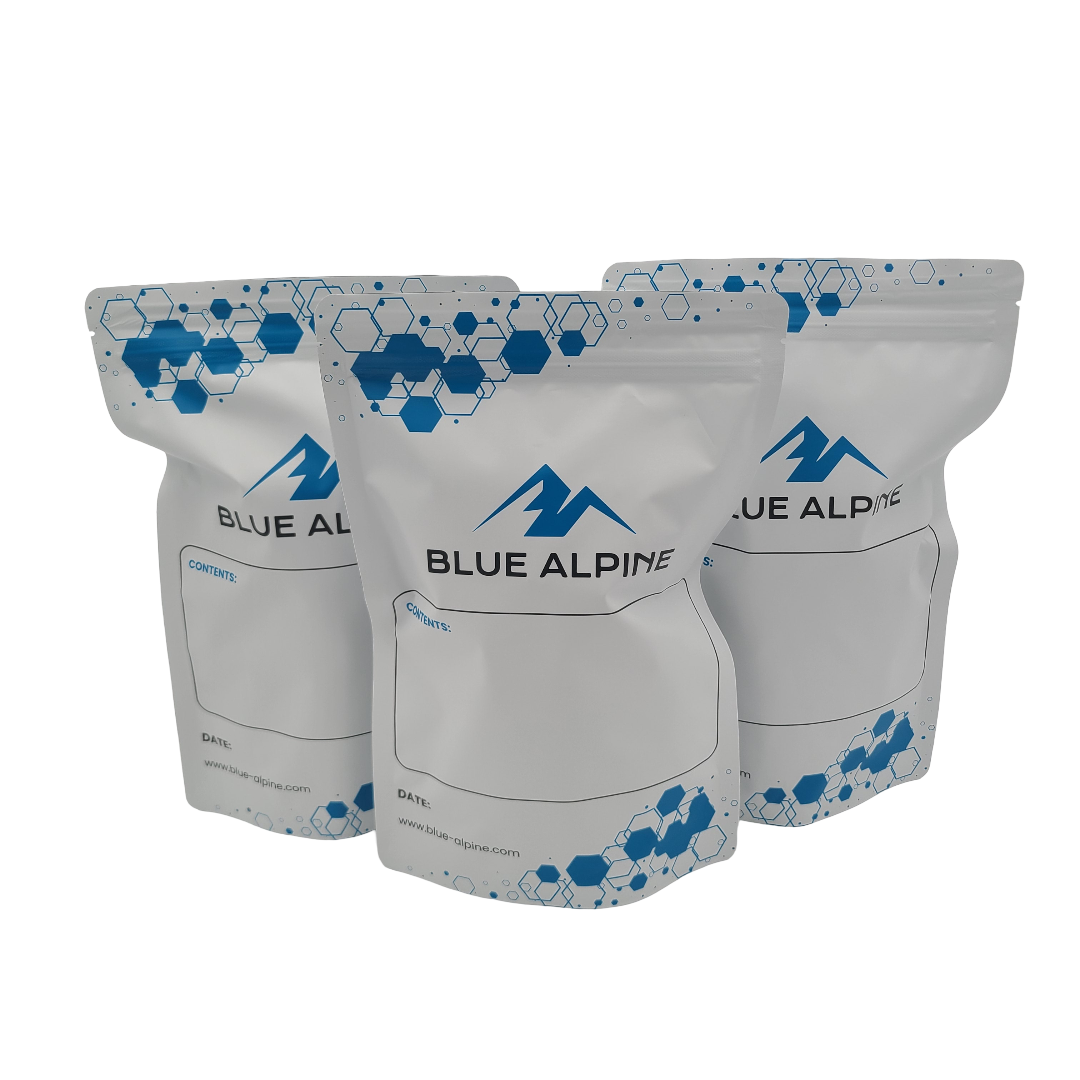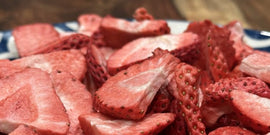 How to Properly Store Your Freeze Dried Foods
How to Properly Store Your Freeze Dried Foods
Whether you're preserving your garden harvest, prepping for emergencies, or just trying to keep healthy snacks on hand, freeze-drying is one of the best ways to make your food last. A freeze dryer is also a big investment, and if you want to reach those desired 20+ years of storage, it's important to take steps to avoid food spoilage.
And if you're new to freeze-drying or just want to make sure you're doing it right, this guide will walk you through how to store your freeze-dried foods for maximum freshness, flavor, and longevity.
Causes of Spoilage for Freeze-Dried Food
Freeze drying removes up to 99% of moisture from food. That lack of moisture is what prevents spoilage, mold, and bacteria from developing — but here’s the catch: the food will quickly reabsorb moisture from the air if it’s not stored properly. That’s why airtight, moisture-proof, and light-blocking storage is a must.
There are 3 major causes of spoilage that you should watch for when preparing your freeze-dried food for long-term storage. They are:
-
Moisture – Any type, even from leaving your food out in the air, will cause spoilage
-
Oxygen – Can cause oxidation and reduce shelf life.
-
Light – Breaks down nutrients and can fade the color and flavor.
Protect your food from these, and you’ll keep it shelf-stable for years.
Best Storage Options for Freeze-Dried Foods
When you are storing your freeze-dried food, where you store your it matters just as much as how. So here are a few things to look for:
-
Temperature: Cool is best — always aim for under 70°F (21°C)
-
Humidity: Dry, dry, dry! Avoid garages, basements, or anywhere moisture creeps in
-
Light: Keep storage in dark areas or use opaque containers to block it out. This protects the nutrients and color in your food.
With this in mind, we can now look at what type of storage options you have for your freeze-dried food:
1. Mylar Bags + Oxygen Absorbers
-
Why they work: Mylar is a thick, light-blocking material that creates an airtight seal. Having thicker bags (at least 7 mils, 14 mils total) helps to protect against small abrasions as well that could puncture thinner mylar. A thicker layer of aluminum (at least 12 microns) also prevents smells from foods like onions from leaking out of the bag.
Blue Alpine's mylar bags have their thickness and their layer of aluminum specifically made to meet these standards. However, any brand that meets these standards is good for long-term food storage.
-
How to use:
-
Fill the bag with your freeze-dried food.
-
Add an oxygen absorber (larger or multiple absorbers are good for bigger bag sizes).
-
Seal with an impulse heat sealer (a hair straightener also works in a pinch).
-
- Tip: Mylar bags with a window do not work as well in long-term storage.
2. Mason Jars + Oxygen Absorbers
-
Why they work: Airtight seal and easy to open and reseal. Since they are glass, it is also easier to check food for signs of spoilage. However, if dropped, they can break.
-
How to use:
-
Fill the jar with your freeze-dried food.
-
Add an oxygen absorber
-
Seal with a vacuum sealer.
-
-
Tip: After putting your food and oxygen absorber in, instead of purchasing a specialized vacuum sealer for your mason jars, you can use your freeze dryer instead! Place your filled jars in the chamber with a lit on each, then turn on the vacuum to bring the pressure down. When you open the door, the jars will seal instantly!
3. Vacuum-Sealed Bags
-
Why they work: Removes air for compact, protected storage.
-
Downsides: Clear plastic doesn’t block light, so it is best to store it in a dark place.
Other Things to Know
- What About Just Using Ziplock Bags?
Ziplocks are fine for very short-term storage, like taking freeze-dried fruit on a hike or packing lunches. But they won’t block oxygen or moisture long-term — so your food won’t last more than a few weeks or months.
- Why Do I Need to Use Oxygen Absorbers?
If you’re not using these yet — it’s time to start. They help prevent spoilage and keep food crispy. Even in sealed containers, oxygen always seems to get in places it shouldn't, so having an absorber gives that extra protection for your food.
They come in various sizes (measured in cc - cubic centimeters). Most home use requires 300–500cc per quart-sized container or bag
Important Note: Only open the oxygen absorber packet right before use, and reseal unused ones in an airtight jar or bag ASAP. If left out for more than a few minutes, they will absorb the oxygen that is in the air and will no longer be usable.
- How do I Tell If My Freeze-Dried Food Has Gone Bad?
Even well-stored food can be compromised if the seal fails or humidity sneaks in. Watch for:
-
-
Food that feels soft or rubbery (should be crisp!)
-
Signs of moisture or condensation inside the container
-
Off smells or flavor
-
When in doubt, toss it out.
Make the Most of Your Freeze Dryer
Freeze drying is an amazing way to preserve food — but storage is what makes or breaks its long-term success. With the right materials and a few simple habits, you can keep your food shelf-stable, nutritious, and ready to enjoy at any time.
If you’re just getting started, grab some Mylar bags, a heat sealer, and some oxygen absorbers — it’s a small investment that pays off big time.
If you have any questions, we'd love to help!
contact@bluealpinefreezedryers.com



